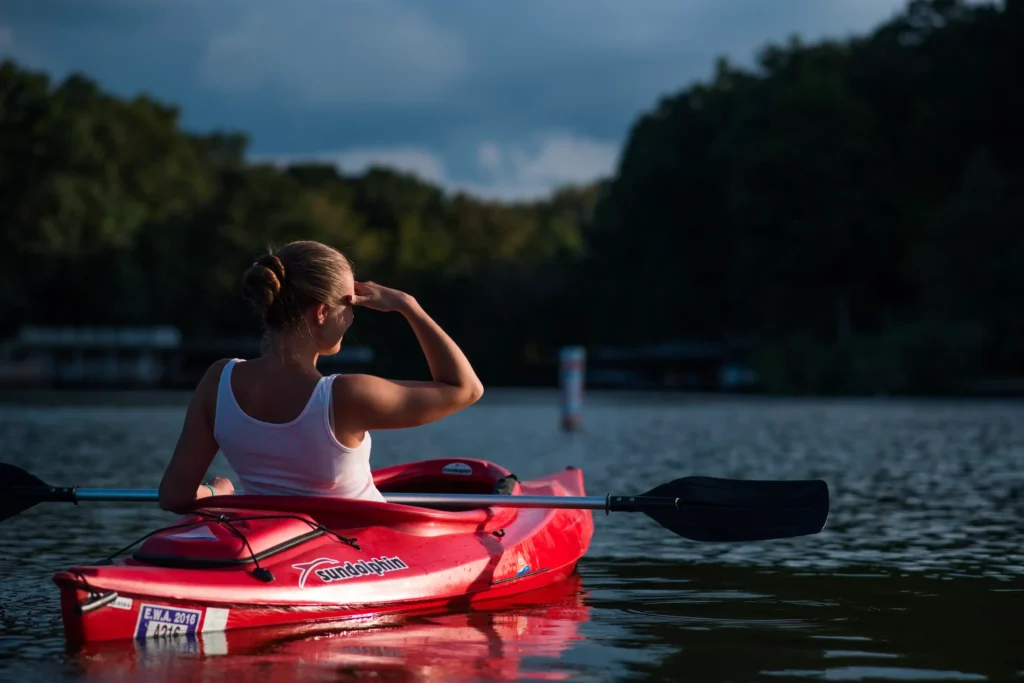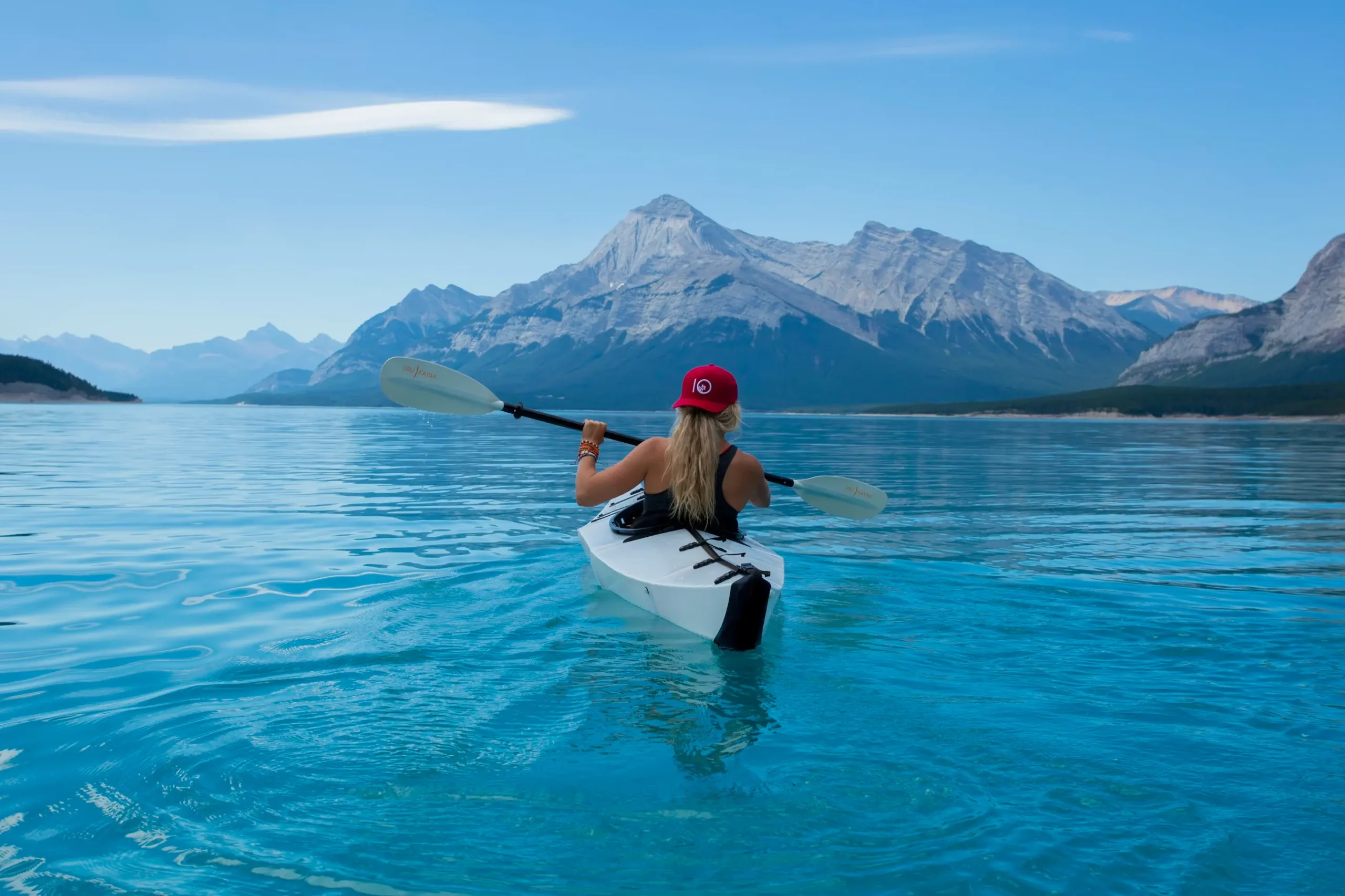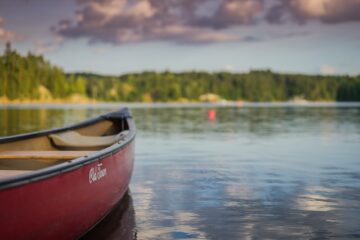Ever wondered how long a canoe paddle should be? For a traditional straight paddle, target a length between 52 and 60 inches. In contrast, bent-shaft options are generally shorter, ranging from 48 to 52 inches, because of their broader blades. Your height and the canoe’s width are also factors to consider.
The right paddle length is crucial. It affects your speed, control, and comfort on the water. Too short, and you’ll strain your back. Too long, and you’ll tire your arms.
In this guide, we’ll dive deep into how to choose the right canoe paddle length. Get ready!
How to Determine the Right Canoe Paddle Length?
Choosing the right canoe paddle length is vital. It’s the key to a smooth and enjoyable paddling experience. Get it wrong, and you’ll face discomfort and fatigue. So, how do you nail the perfect length? Let’s dive in.
Consider Your Height and Canoe Width
First up, your height and canoe width matter. A tall person needs a longer paddle. A wider canoe also requires a longer paddle. Measure the canoe at its widest point. Then, stand next to it. The paddle should reach from the water to your chin.
Here is the Canoe Sizing Guide
| Torso | Straight Paddle Length | Bent Paddle Length |
| 20″ | Youth 36″ | N/A |
| 22″ | Youth 42″ | N/A |
| 24″ | Youth 48″ | N/A |
| 26″ | 51″ or 52″ | 48″ |
| 28″ | 54″ | 50″ |
| 30″ | 56″ or 57″ | 52″ |
| 32″ | 57″ or 58″ | 54″ |
| 34″ | 60″ | 56″ |
| 36″ | 62″ | N/A |
| 38″ | 64″ | N/A |
Factor in Your Paddling Style
Next, think about how you paddle. Leisurely paddlers may prefer a shorter paddle. It offers better control. Adventurous types may opt for a longer paddle. It provides more speed.
Quick Measuring Methods
Ready for a shortcut? Extend your arm above your head. The paddle grip should fit in your hand. The blade should rest on the ground. Simple, right?
Advanced Sizing Techniques
For the pros out there, advanced methods exist. Some people use torso measurements. Others use the “on the water” method. This involves sitting in your canoe and measuring. The paddle should reach from the water to your nose.
The right canoe paddle length depends on various factors. Your height, canoe width, and paddling style all play a role.
Quick and Easy Methods for Measuring Paddle Length
Need to find the right canoe paddle length fast? You’re in luck. There are quick and easy ways to measure. No fuss, no stress. Let’s get started.
The Arm-Length Method
- First, let’s talk about the arm-length method. Stand up and extend your arm above your head.
- Hold the paddle’s grip in your hand.
- The blade should touch the ground.
- If it does, you’ve found a good length. Simple as that.
The Oar-On-Shoulder Technique
Another quick trick is the oar-on-shoulder technique.
- Place the paddle on your shoulder. Your hand should grab the throat naturally.
- The blade should extend past your body.
- This ensures a good reach into the water.
The Sit-and-Measure Way
Finally, there’s the sit-and-measure way.
- Sit down and place the paddle vertically next to you.
- The grip should align with your nose.
- The blade should sit flat on the ground.
This method works well when you’re already in the canoe.
So, there you have it. Three quick and easy methods to find the right paddle length. Use the arm-length method for a fast check.
How Long Should A Canoe Paddle Be?
To find the right canoe paddle length, consider your height and the canoe’s width. Taller paddlers need longer paddles, while shorter ones require shorter ones.
Narrow canoes pair well with shorter paddles, and wider canoes need longer ones.
Straight paddles should be 52″ to 60″ long, while bent-shaft paddles are best at 48″ to 52″ due to their wider blades. Understanding these factors helps you choose the ideal paddle for a comfortable and efficient canoeing experience.
Understanding Canoe Paddle Components
Ever looked at a canoe paddle and wondered what each part does? Knowing the components is key to better paddling. Let’s break it down.
The Grip: Your Hand’s Best Friend
First up, the grip. It’s the top part where your hand rests. A good grip feels comfortable and natural. It helps you control the paddle with ease.
The Shaft: The Backbone of the Paddle
Next is the shaft. This is the long, straight part. It connects the grip to the blade. The shaft’s length and material affect your paddling speed and comfort.
The Blade: The Water Mover
Now, the Blade. This is the flat, wide part at the bottom. It’s what moves the water when you paddle. The shape and size of the blade can change how fast or smooth you paddle.
The Tip and Throat: Small but Vital
Last, let’s talk about the tip and the throat. The tip is the bottom point of the blade. It often hits rocks and debris, so it needs to be durable. The throat is where the shaft meets the blade. It’s a key point for balance and control.

How to Test a Canoe Paddle Before Purchase?
Ready to buy a canoe paddle? Hold on. Checking the paddle before purchase is crucial. It spares you from wasting time, spending extra money, and facing future issues while paddling. Let’s explore how to test a canoe paddle the right way.
In-Store Testing
First stop, the store. Most stores have a range of paddles.
- Pick one up. Feel its weight.
- Is it too heavy? Next, check the grip.
- Does it fit well in your hand?
These are quick checks but important.
On-the-Water Testing
If possible, take it to the water. This is the ultimate test. Paddle around. Pay attention to your comfort and control. Does the paddle feel too long or too short? This real-world test is the best way to know for sure.
The Flex and Balance Check
Last but not least, check the flex and balance.
- Hold the paddle horizontally with both hands.
- Apply slight pressure.
- A good paddle has a bit of flex but not too much.
- Balance is also key.
It should feel even, not tip-heavy.
Final Words
Determining how long should a canoe paddle be is essential for a comfortable and efficient paddling experience. Factors such as your height, canoe width, and paddling style play a pivotal role in selecting the right length.
Whether you opt for quick measuring methods or advanced sizing techniques, finding the perfect paddle length ensures you can navigate the waters with ease. So, remember, choosing the ideal paddle length is the key to enjoying your time on the water to the fullest.





[…] forget to select the right paddle size for you before […]
[…] to your most common use to get the most out of your investment. You might also need to choose a perfect paddle for your […]
[…] need a paddle, of course. Canoe paddles have one blade. Kayak paddles have two. Pick one that suits your height and […]